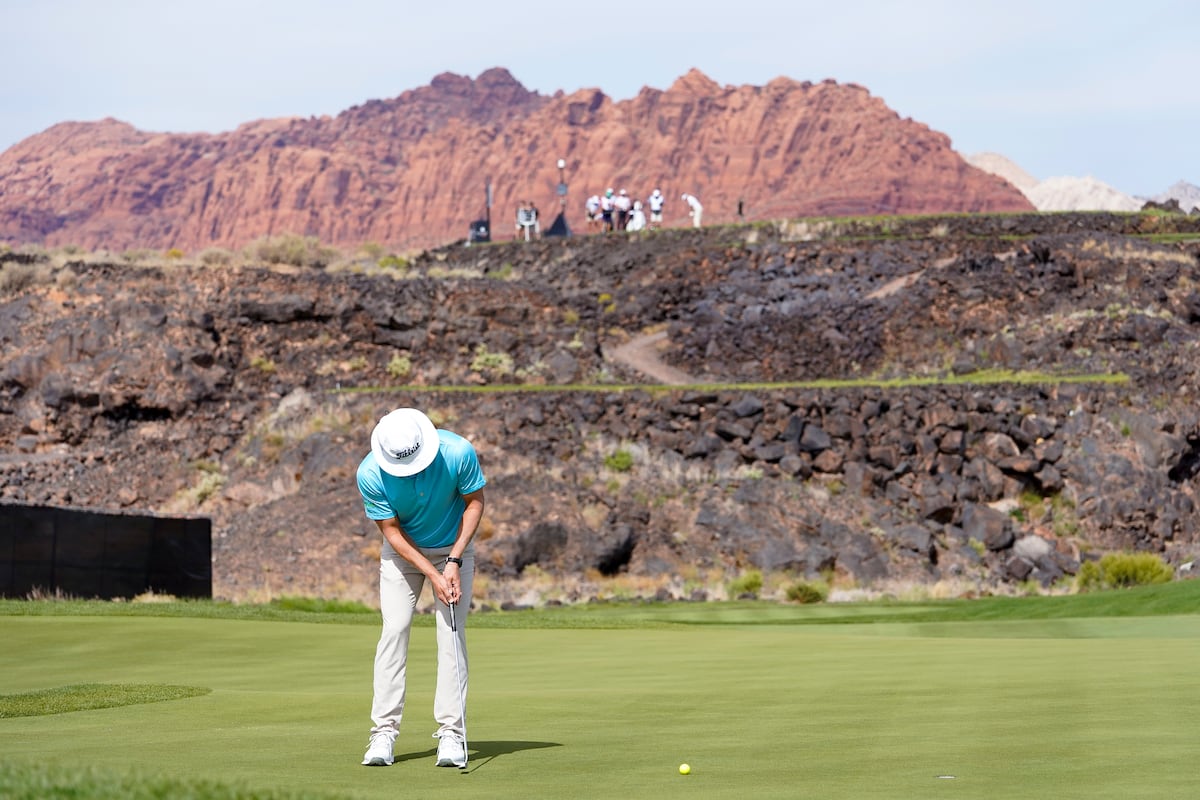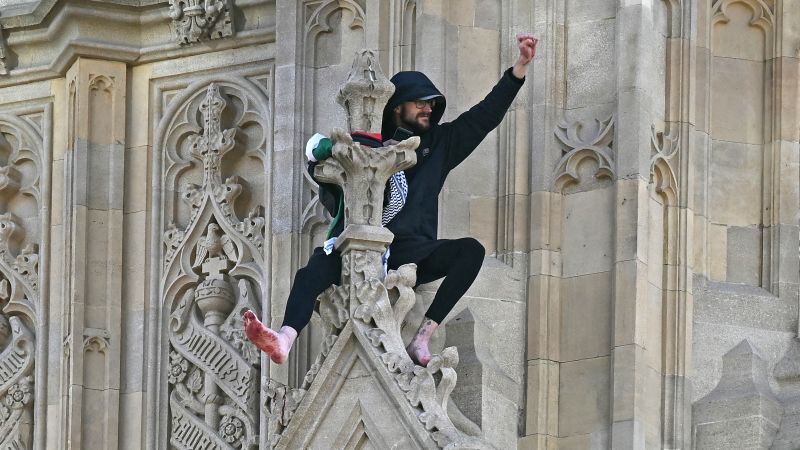Ivins • When you talk to Phil Smith, he can almost trick you into thinking he’s a golf everyman.
He’ll lament to you — almost like he’s your buddy — that he doesn’t get out on the course as much as he’d like these days.
But that’s because he’s been too busy building golf courses. Smith has been around the world (his designs live in seven different countries) creating courses with major champions like Jack Nicklaus and Tom Weiskopf.
His latest — and he thinks his best — resides near St. George at Black Desert.
“I couldn’t think of a better project,” Smith says.
The course is playing host to the PGA during this week’s Black Desert Championship.
After that, it will be open to the rest of Utah.
Smith hopes the course he and Weiskopf laid out will impress pros and locals alike.
Cutting into the coal-black lava fields, and looking up at Zion’s burnt orange cliffs, the course is meant to feel like Hawaii-style golf with a desert twist. It’s a place for pros, but also for the average golfer with whom Smith tends to identify.
“You know what Bandon Dunes [in Oregon] has done for people who can’t travel to Scotland? You can go there to experience [Scotland-like golf],” Smith said. “We wanted to create that sort of experience here in St. George. Where you can travel here and kind of get that feeling of Hawaii, you know? And it’s not just Hawaii, it’s Sedona, Arizona.”
The unique golf experience comes with several marquee holes.
Here’s a look at some of the designer’s favorites.
Hole 1
(Chris Samuels | The Salt Lake Tribune) The first hole fairway at the Black Desert Championship PGA Tour golf tournament in Ivins, Thursday, Oct. 10, 2024.
The first hole isn’t overly challenging. But it’s about the destination. Unlike most courses where you typically go down in elevation on the first hole because the clubhouse is at the highest point, at Black Desert you start by going up.
Smith wanted golfers to get to the first green and climb up to the lookout point where they could see the entire canyon and lava backdrop.
“Get you up there and see what you’re in for that day. In my mind, it is one of the most beautiful vistas,” Smith said. “It’s a bit of a tease.”
Hole 3
(Chris Samuels | The Salt Lake Tribune) Chris Kirk hits a tee shot on the third hole during the first round of the Black Desert Championship PGA Tour golf tournament in Ivins, Thursday, Oct. 10, 2024.
As players walked to the third green on Tuesday, several stopped to take a look at the bunker smack dab in the middle of the putting surface.
“I’ve only seen one other hole like that,” one caddy said as he took notes.
He was comparing it to Riveria’s sixth hole, famous for its bunker at the center of the green.
While Smith doesn’t think this is Black Desert’s signature hole, its oddities are certainly memorable. The par three comes from an elevated tee box and you hit into a punchbowl-style green.
The one positive — as assessed by the same caddy — is Black Desert’s green bunker isn’t as difficult as Riviera’s. There, he said, players have to hit a much flatter shot into the green which makes it harder to avoid the bunker.
But since this is an elevated tee shot, players are lofting shots in and can more easily avoid the hazard right in front of them.
Originally, the hole was going to have waterfalls coming down on the sides instead of a bunker.
“That was just a little too contrived,” Smith said. “That hole is down in a quarry. Tom [Weiskopf] and I were talking, and I said, ‘Why don’t we do one of the biggest greens on the site, and do the bunker because it’s such a cool feature.’”
The quarry helps give the green a natural punchbowl, making it doable. If a player misses short left and the hole is on the top right — with the bunker between — they can still putt around it because everything slopes back in.
“You’ll see the contours bank the ball around,” Smith said.
Hole 7
(Chris Samuels | The Salt Lake Tribune) Spectators view the seventh hole during the first round of the Black Desert Championship PGA Tour golf tournament in Ivins, Thursday, Oct. 10, 2024.
The seventh hole is one of the hardest holes on the course because of its length — nearly 600 yards. But that is not why it’s memorable.
The fairway has lava islands players have to hit around. Lava used to flow through the area near Zion National Park, according to the National Park Service. This hole is a reminder of that.
“That was sort of the thinking process. How to work these holes through this lava?” Smith said.
Hole 13
(Chris Samuels | The Salt Lake Tribune) Players on the 13th hole green during the first round of the Black Desert Championship PGA Tour golf tournament in Ivins, Thursday, Oct. 10, 2024.
Weiskopf wanted the 13th green to feel like Pebble Beach. The hole has water running down the entire left side of the fairway. And the second shot into the green has the Pebble look to it.
It is a small green and elevated. You have to hit the ball up to the green and hold it. The biggest difference from Pebble Beach? Instead of water and rocks around the green, there are mounds of lava rock.
If you miss the green, it could be difficult to get out.
“You can’t see the green [when you’re hitting the second shot],” Weiskopf said before his death in 2022. “It was inspired by the 14th hole at Pebble Beach. The par five there is where you are always playing uphill to a very small plateau green.”
Hole 17
(Chris Samuels | The Salt Lake Tribune) A view of the 17th hole green at the Black Desert Championship PGA Tour golf tournament in Ivins, Thursday, Oct. 10, 2024.
Weiskopf won the British Open at Royal Troon in 1973 — a golf course known for its iconic postage stamp green. Hole No. 8 at Troon is just 123 yards, but players struggle to hit the green because it is so small and protected by deep coffin bunkers (plus the wind).
Weiskopf died before Black Desert was finished, but he thought Hole 17 was similar to the postage stamp. It is only 155 yards, but the green is similarly small and surrounded by bunkers.
“A little bit of a spinoff of the famous postage stamp,” Weiskopf said before he died.
Smith sees hole 17 slightly differently. He called the par three similar to the “Devil’s A–hole” at Pine Valley. It also has a small green surrounded by coffin bunkers.
Either way, Weiskopf’s assessment of the hole stands.
“It’s going to reward a very good tee shot,” he once said. “Pick the right club and hit it on the well-protected green.”
Other notes
Two drivable par-fours give players clear risk-reward. It is a staple in Weiskopf’s designs.
“Every level of golfer can have the excitement of trying to go for a green,” Smith said. “It’s one shot, and that’s pretty enticing for a high handicapper.”
There is also a shared green. Hole eight and two have the same green, players just hit into the opposite side.
Most greens have a potato chip contour to them — a Smith design.












